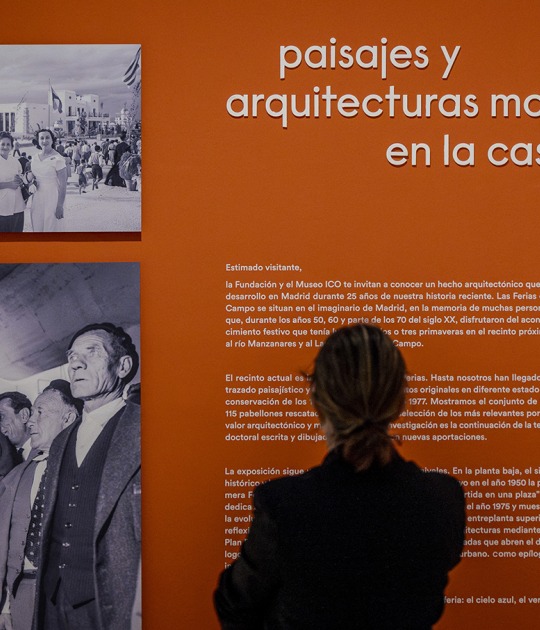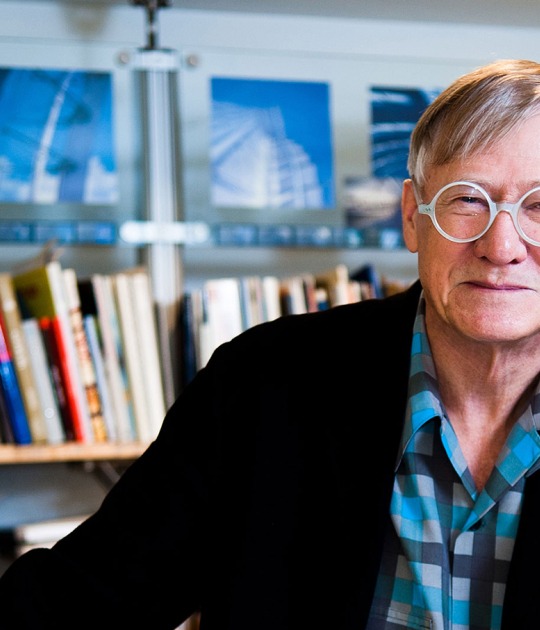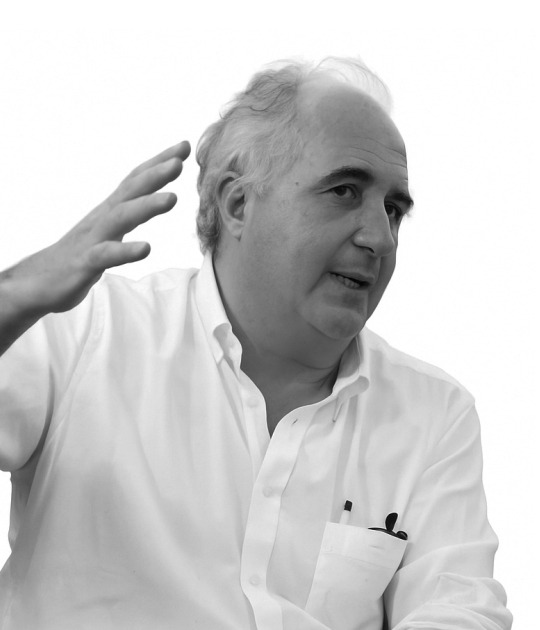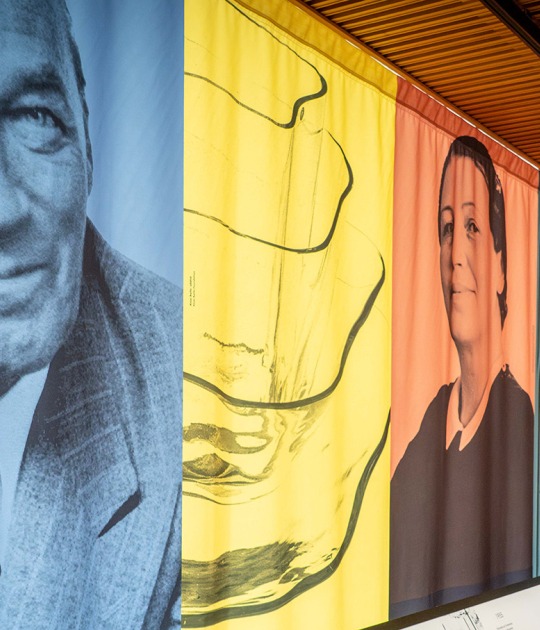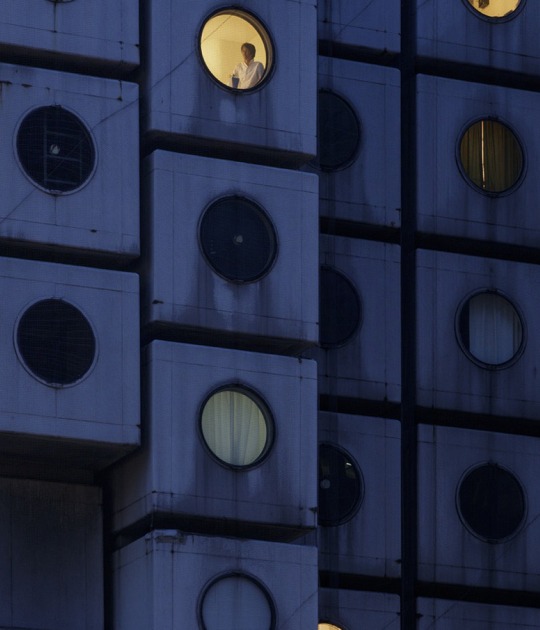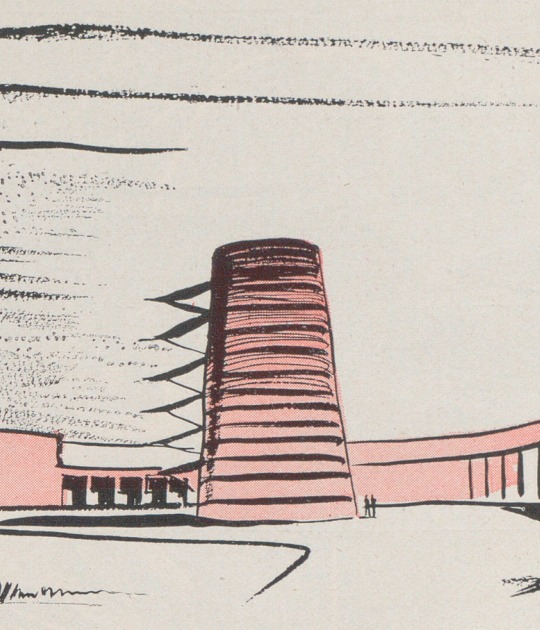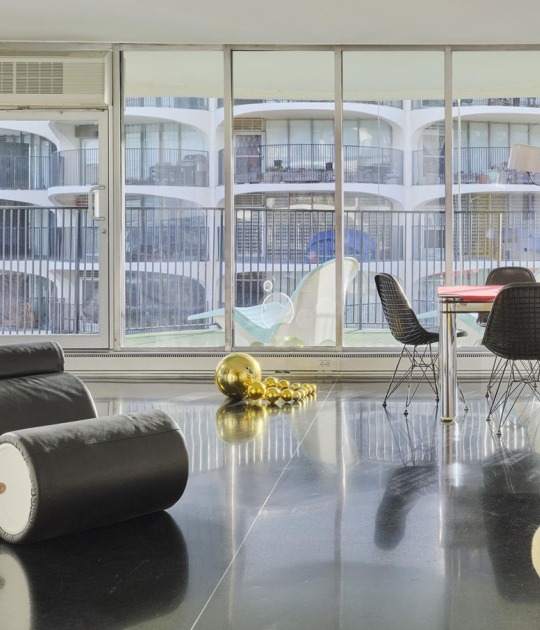The first meeting between Scarpa and Olivetti took place in 1952 on the occasion of the 4th Congress of the National Urban Planning Institute in Venice. The name and work of Scarpa, who was also awarded the Olivetti prize for architecture in 1956, had started being mentioned and recognized in the early 1950s on the pages of the magazines published by Edizioni di Comunità, from «Zodiac» to «Metron» to «seleArte», and also through the mediation of respected art and architecture historians and critics, such as Bruno Zevi, Carlo Ludovico Raggianti, Sergio Bettini, Licisco Magagnato, Giuseppe Mazzariol and Pier Carlo Santini.
The relationship of professional and personal esteem established between Carlo Scarpa and Adriano Olivetti has therefore been translated several times into design occasions commissioned by the Ivrea-based company, also following the death of its charismatic founder in 1960: in addition to the well-known showroom in Piazza San Marco in Venice (1957-58), Scarpa took part in a competition launched by Olivetti in 1955 for the construction of a mountain resort village in Brusson in the Aosta Valley and, in 1969, he set up the Frescoes from Florence exhibition at the Hayward Gallery in London as a sign of gratitude for the help provided by the English people in Florence during the 1966 flood.
The three projects drawn up by Carlo Scarpa on behalf of Olivetti, respectively with a social, commercial and cultural vocation, are emblematic expressions of Olivetti's complex architectural program and above all attest to points of convergence and harmony and fields of commitment shared with Scarpa.
The exhibition is also intended to be a contribution to telling this story, very intense and little known in all its many facets.

Competition for the Olivetti mountain resort village
Brusson (Valle d’Aosta) 1955
Carlo Scarpa participated in the competition launched by Olivetti for the design of a summer resort village in Brusson, in Valle d’Aosta. This project was part of Olivetti’s effort to promote many architectural projects with a social–welfare purpose, which was at its apex around the mid–1950s. The competition called for a central building for common services and autonomous residential units. Scarpa’s proposal followed the irregularity of the plot with a complex spatial conformation organized in various areas and on various levels.
The north–south direction was chosen as the backbone of the complex, along which the rooms are distributed: in the northern wing there are the irregularly–shaped cells of the study area; as a hinge, the central nucleus with entrance, ball room and greenhouse; finally, in a vertical layering, the fan–shaped cells for dormitories, mess hall and services.
The roof is pitched, with different inclinations, with dormers, and has fragmented profiles; the internal elevations create sections that feature floors, walkways and differences in height; the facades are marked by series of glass surfaces and reflect the expansion and contraction of the plan. The project by architects Claudio Conte and Leonardo Fiore won the competition, also because Scarpa’s project, although appreciated, had not been sufficiently detailed. The panel’s statement in fact reported that «the deep esteem for Carlo Scarpa may explain the support and appreciation that the Commission reserved for documents which were too summary».

Olivetti showroom in Piazza San Marco in Venice
Venice 1957–1958
Immediately after receiving the Olivetti Award in 1956, Scarpa was assigned the renovation project of the space acquired by Adriano Olivetti to house the company’s showroom in Venice, in one of the most popular places in the world, Piazza San Marco. Not surprisingly, the showroom was meant to be a prestigious «business card» for Olivetti, not destined to selling its products but to put them on display.
The narrow and elongated space was not high enough to create two floors but, by means of a horizontal partition, Scarpa partially doubled the levels without compromising the entirety of the space. The showroom, on the corner between the square and the porch, was provided on both sides with shop windows, with no projecting elements or mouldings and grafted with a frame to the wall; the glass is held in place by metal profiles.
The entrance area, placed beside the window on the square, is closed by a woven iron gate and inside the floor is elevated by thirty centimetres, with a paving made of Murano glass paste tiles. A black stone basin filled with water reflects Alberto Viani’s gilded bronze sculpture Nude in the sun. The interior features a suspended slab staircase in Aurisina marble that leads to the mezzanine; the balconies supported by trusses are made of teak wood, also used for the cladding on the lower floor and for the sliding barriers on the back wall that screen the eye–shaped openings towards the square.

Set up of the exhibition Frescos from Florence
London 1967
The exhibition was conceived as an opportunity to show about 70 Renaissance frescoes saved from the 1966 Florence fl ood, detached with the «strappo» technique and restored; a tribute to the countries who had come to the aid of Florence’s works of art. Scarpa was involved by the sponsor, Olivetti, for the London exhibition, which followed the ones in New York and Amsterdam. Forced to adapt his exhibition methods to the halls of the Hayward Gallery — an undistinguished brutalist building —, the architect created a highly suggestive set up by favouring the dialogue between the works of art and transforming the confused interiors of the building into a sequence of logical and at the same times emotional spaces.
The exhibition itinerary follows the attentive research for harmonious and hierarchical relationships between the pieces, with particular attention to the relationship between the work and the viewer. Scarpa placed the modular panels parallel or perpendicular to the perimeter walls of the halls, also adding other supports, which are also placed in a zig–zag or oblique pattern, to obtain a close dialogue between the frescoes within a limited spatial unit. The precise lighting of the single frescoes with spotlights contrasted sharply with the overall darkness of the halls, highlighting the exceptional nature of the materials on display.
It is no coincidence that the London edition of the Frescoes from Florence exhibition was an incredible success with the public; the press gave a very wide resonance to the event, underlining how the emotions aroused by the display of the frescoes were accentuated by the surprise for how Scarpa excellently transfi gured the unfortunate building that housed them.











